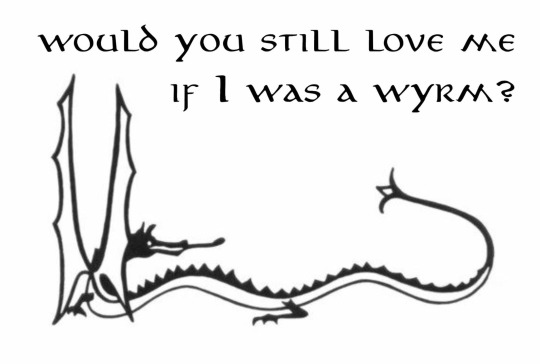Text
Now! In 2008, news articles came out reporting that letters had been found in the archives of the Earl of Home from Lady Jane to her lawyers indicating her guilt. However, on looking into it I'm not sold that it's strong evidence in any state or fashion- the researcher who found the letter is writer, journalist, television producer, and now convicted sex offender Karl Sabbagh, and the undated letter from Lady Jane question goes, “O Lord of Infinite Mercy and Great Compassion,” it reads, “this is a day of great Perplexity with me and of great trouble & distress therefore I come to thee say thou the word and thy servant shall be healed thou even thou only can heal the brocken [sic] in heart and bind up all their wounds but I’m not worthy of such as this when my crimes are gone over my head and are a heavy burden too heavy for me to bear . . . Cleanse me from all my vileness and wickedness and make this guilty heart yet a sacrefise [sic] of Praise unto thee."
His other evidence is a journal from one of Lady Jane's many lawyers, James Carnegy of Boysack, who was frustrated by working with the Duchess of Douglas (Margaret Douglas, Archibald the elder's widow, now Archibald the younger's primary family), who wrote, "I know the Duchess well enough by sad experience to be sensible that she detests nothing so much as such discoveries and that in order to please her you must find out stories that appear favourable to her views, though they be never so vain and illusory . . . I am sorry to say it even to myself, that when the foundation is false it is a difficult matter to raise a superstructure that is good and honest and of which the different pieces tally and correspond.”
But, as Sabbagh put it, Carnegy, "described one of the witnesses for Douglas as a ‘bitch’ and another as a ‘rascal’, and the terms in which he wrote about his client, the Duchess, would have had him drummed out of the legal profession if they had come out.” (Source)
From this Sabbagh concludes the possibility that that the babies were purchased, but underlines the ambiguity of the situation and how it's still open to interpretation. (Source) Personally I'm disinclined to place heavy weight on the undated un-detailed religious guilt of a 18th c. noblewoman who lost a child at one point or the possibly misogynistic frustrations of one of many lawyers tasked with building a case in evidence for a couple's three-month stay from 14+ years prior in another country's capital city in the 1700s, nor does Sabbagh's sex offender conviction endear his interpretations of a woman's life to me, though in my cursory look around I see no fault with how he presents his research.
Choose your own adventure though! If Lady Jane mounted a wildly ambitious bid to con an unjust patrilinear system of inheritance (later supported by her sister-in-law) I rather support them both, and if she was just a normal person who had babies at an unusually late age and had to deal with mountains of bullshit thereafter she's got my vote as well.
youtube
This one is Child 204 Jamie Douglas, which is tied up with several loaned verses from Wally Wally/The Water Is Wide.
Franklin wrote of the song,
"Lady Barbara Erskine, eldest daughter of John, Earl of Mar, was married to James, second Marquis of Douglas, near the end of the year 1670. The marriage did not prove happy, and the parties were formally separated in 1681. The blame of the alienation of Duglas from his wife is imputed by tradition to William Lawrie, the marquis's principal chamberlain or factor, who was appointed to that place in 1670, the year of the marriage. Lawrie married Marion Weir, of the family of Blackwood, then a widow, He is often styled the laird of Blackwood, a title which belonged to his son by this marriage, his own proper designation being, after the birth of his son, the Tutor of Blackwood.
The ballad first appeared in print in the second edition of Herd's Scottish Songs, 1776, but only as a fragment of five stanzas. Most of the versions have from one stanza to four of a beautiful song, known from the first quarter of the eighteenth century, and printed fifty years earlier than any copy of the ballad (see Notes).
So the Jamie Douglas in question is pretty straightforward- first engaged to "the daughter of one Widow Jack, a taverner at Perth" (source) he then apparently broke that off to instead marry the (presumably wealthier and at least more titled) Lady Barbara.
They wed in 1670, and, soon after believing the tales of his wife's infidelity, Douglas rejected Barbara Erskine and she returned to her father's home where she never married again, but she did get a decree from the Privy Council giving her a provision out of her husband’s estate.
All that said, I've spent the last few weeks reading up on and trying to make sense of the absolutely insane amount of drama that followed Jamie Douglas' two children by his second marriage- will try to summarize that and make a timeline here in a bit!
#diatribe delayed a bit due to travel etc.#done now at last thanks for listening!#child 204#jamie douglas#lady jane douglas#the douglas cause
7 notes
·
View notes
Text
So! This is a wild story that was hugely famous at the time (maybe I would have heard about it if I were European, or at least Scottish?) but I hadn't until now: let me try to break down the multi-generational soap opera below the cut:
Jamie Douglas went on to have two children that survived to adulthood via his second marriage to Mary Kerr, granddaughter of a marquess.
Child #1 was the eccentric, isolated, somewhat illiterate, half mad Duke Archibald Douglas, born 1694. He killed his cousin Captain John Kerr during a visit "in a fit of jealousy" and had to hide in Holland for a time. (Source)
Child #2 was the beautiful, intelligent, independent Scottish noblewoman Lady Jane Douglas, born 1698.
Jamie Douglas died three years after his daughter's birth and they were raised by their mother, so he's now out of the story entirely.
In 1720 the wealthy Lady Jane was engaged to Francis Scott, Earl of Dalkeith.
The engagement progressed until at some point the eccentric, apron-wearing, masquerade-hosting, patron-of-the-arts, vegetarian, fencer, Duchess of Queensbury Catherine Hyde (even more noted for freeing the Afro-Carribean enslaved person Julius Soubise gifted to her by a family member and raising him in upper British society) steps in and insisted that instead of marrying our Lady Jane Douglas, Frederick Scott marry...a different Lady Jane Douglas, Hyde's cousin.
"While arrangements for the marriage were being concluded, a letter purporting to come from her lover, and confessing to a previous attachment, was handed to Lady Jane by a stranger. Lady Jane determined to seek the seclusion of a foreign convent, and, assisted by her French maid, set out secretly for Paris in male dress. She was followed and brought back by her mother and brother, and the latter, it is said, fought a duel with the Earl of Dalkeith. " (Source)
My inference here is that Hyde sent the letter, but the sources I see mentioning it don't fully explain that. In any case, Scott marries Hyde's cousin.
Our Lady Jane (not the other one) now remains defiantly single, supported by an allowance from her brother, turning down many suitors.
Around 1734 she meets the penniless Jacobite John Steuart (or Stewart) of Grandtully, second son of a baronet, and they court for two years, but she breaks off the relationship citing an aversion to marriage. I'm unclear on the timeline but at some point he joins the Swedish military and fights abroad, rising to the rank of Colonel. (Source)
Around 1736 she takes up residence in Drumsheugh House, where she lives for some time.
Ten years on from either their separation, his joining the military, or both (I forget and it's not important), she writes him to say she's relented, and they meet again and she secretly marries her lover on 4 Aug. 1746 in Drumsheugh, with just an Episcopal minister and a servant as a witnesses.
Also in 1746 or thereabouts she finds time to conceal her distant relative Chevalier Johnstone at Drumsheugh after his escape from the Battle of Culloden, the last confrontation of the Jacobite uprising of 1745.
She is at this point estranged from her brother Archibald, possibly because he is still Hanoverian and she and her new husband are now Jacobites, hence the secrecy. Duke Archibald's Douglas Castle is plundered during the Jacobite uprising of 1745, so that won't make him any sweeter to her cause. There's some concern she may lose her allowance should the marriage be discovered.
Come 1748, likely to both hide their marriage and escape creditors Stewart and Lady Jane flee Scotland separately and sail to the Low Countries, revealing the marriage at last and announcing that (at the unlikely age of 50) she is pregnant, then on to Paris, where at 51 she emerges with twin boys Archibald and Sholto, their birth supposedly witnessed by just the housekeeper.
Immediately there are rumors that the boys were purchased as infants and Lady Jane was never pregnant, and Lady Jane's brother believes them and cuts off her allowance. Lady Jane's brother is at this point without children, so if the boys are blood relations they are his heirs, and if not then his inheritance will fall to the Duke of Hamilton, a distant cousin. When she tries to visit her brother, Lady Jane is turned away: "It is reported that when his sister was waiting at the castle gate a servant, whose advice he weakly asked, locked the duke into a room, and kept him there until Lady Jane had departed." (Source)
John Stewart is imprisoned for debt, but King George II somehow has an axe to grind in this situation (I don't understand monarchy) and settles an annual allowance of £300 on Lady Jane, for the small family to survive on.
In 1754 first the younger child Sholto dies of illness, followed by Lady Jane herself, with the with the inheritance still long from being resolved, leaving just the elder child Archibald. Her brother reluctantly paid for her funeral, stiplulating that her son should not be present, and she was buried in her mother's grave, but her son refused to leave his mother's corpse, dressed for the funeral, and "on taking his place in the coach he was rudely dragged out and forced back into the house."
In 1758, Lord Archibald Douglas (the brother) marries the strong-willed and persuasive Margaret Douglas, and though they initially separate a year after their marriage "the duke making one condition of her receiving an alimentary allowance that she should not attempt to see or speak with him save by his invitation" (yikes Source) they reconciled soon after and she eventually succeeded in reconciling him to Archibald and persuading him to settle his estates on the young man. The Duke Archibald of Douglas entailed his estates upon the younger Archibald in 1761, and ten days later passed away.
So Lord Douglas (the senior, now recently deceased) was titled Duke of Douglas, a title which dissolved upon his death, but his titles of Marquis of Douglas and Earl of Angus both passed to the then six-year old James Douglas-Hamilton, already the 7th Duke of Hamilton. The extensive estates all went to Lady Gray's son Archibald, now 13 years old and in the care of other relatives, an inheritance worth £12,000 a year (about $2.7 million USD today).
As you might imagine this was not popular with the Douglas-Hamiltons, who contested the inheritance immediately, and the court case that followed in 1762 was an insane three ring circus (which came to be called the Douglas Cause) that riveted everyone.
Both parties hired massive legal teams (who in turn racked up massive court costs) and the Douglas-Hamiltons hired a shady investigator named Andrew Stuart who went to France and reported that:
Archibald Douglas (the younger) was "Jacques Louis Mignon", the son of a glass worker kidnapped as an infant by ‘a lady, a gentleman and their maid’.
That his now-deceased brother Sholto Stewart was the son of ‘Sanry the Rope Dancer’, also kidnapped.
No witnesses could be found to verify Lady Jane's pregnancy or stay as she'd reported it.
Both sides published thousands of pages arguing their case and citing Scots and French law, with litigation taking place Scotland, England and France, and immense public interest throughout Europe, and many popular figures of the day weighing in one way or the other. Massive bets were placed on the outcome, and the Edinburgh mob in particular favored Archibald's case.
In 1767, over a decade after Lady Jane's death, the Court of Session in Edinburgh: 24 lawyers pled the case to 15 judges over 21 days, the longest ever pleading before the Court of Session. The judges were split 7/7 down the middle, and the residing Lord President voted in favor of Douglas-Hamilton.
Archibald Douglas immediately appealed and in 1769 the case was reopened, during which time, "the private detective challenged and fought a duel against one of Archibald’s lawyers who had called him a liar. Pistols were fired but both missed." (Source)
The prior decision was unanimously reversed in Archibald's favor, and Edinburgh rioted with joy. "This decision was the signal for great rejoicings and tumultuous uproar, especially in Edinburgh, where a mob collected, demanded a general illumination in honour of the event, and, shouting ‘Douglas for ever!’ proceeded to wreak vengeance on the houses of those lords of session who had given an adverse vote in the case. The lord president and lord justice clerk (Miller) were specially singled out; most of their windows were broken, and attempts were made to break into their houses. Similar attentions were paid to the houses of the Duke of Hamilton's friends and of any who refused to illuminate. This was continued for two nights, and the military had to be called out." Source
Douglas-Hamilton, now aged 14, died of a fever a few months later. Now abysmally wealthy, Archibald Douglas became an "improving landlord" with an "unexceptional life" (source) surviving to the age of 79. He wed twice and had many children who similarly flourished, to the point where a descendant of his became Prime Minister in the 1960s.
So Lady Jane won in the end, though she never lived to see it-whether she told the truth or not, there was eventually a twisted, dragged out victory for the "believing women" camp of things. I wonder what Barbara Erskine would have thought.
youtube
This one is Child 204 Jamie Douglas, which is tied up with several loaned verses from Wally Wally/The Water Is Wide.
Franklin wrote of the song,
"Lady Barbara Erskine, eldest daughter of John, Earl of Mar, was married to James, second Marquis of Douglas, near the end of the year 1670. The marriage did not prove happy, and the parties were formally separated in 1681. The blame of the alienation of Duglas from his wife is imputed by tradition to William Lawrie, the marquis's principal chamberlain or factor, who was appointed to that place in 1670, the year of the marriage. Lawrie married Marion Weir, of the family of Blackwood, then a widow, He is often styled the laird of Blackwood, a title which belonged to his son by this marriage, his own proper designation being, after the birth of his son, the Tutor of Blackwood.
The ballad first appeared in print in the second edition of Herd's Scottish Songs, 1776, but only as a fragment of five stanzas. Most of the versions have from one stanza to four of a beautiful song, known from the first quarter of the eighteenth century, and printed fifty years earlier than any copy of the ballad (see Notes).
So the Jamie Douglas in question is pretty straightforward- first engaged to "the daughter of one Widow Jack, a taverner at Perth" (source) he then apparently broke that off to instead marry the (presumably wealthier and at least more titled) Lady Barbara.
They wed in 1670, and, soon after believing the tales of his wife's infidelity, Douglas rejected Barbara Erskine and she returned to her father's home where she never married again, but she did get a decree from the Privy Council giving her a provision out of her husband’s estate.
All that said, I've spent the last few weeks reading up on and trying to make sense of the absolutely insane amount of drama that followed Jamie Douglas' two children by his second marriage- will try to summarize that and make a timeline here in a bit!
#no idea how reliable my sources are! i figure they have to be sensationalized to have this much drama#but hey they're fun at least
7 notes
·
View notes
Text
youtube
This one is Child 204 Jamie Douglas, which is tied up with several loaned verses from Wally Wally/The Water Is Wide.
Child wrote of the song,
"Lady Barbara Erskine, eldest daughter of John, Earl of Mar, was married to James, second Marquis of Douglas, near the end of the year 1670. The marriage did not prove happy, and the parties were formally separated in 1681. The blame of the alienation of Duglas from his wife is imputed by tradition to William Lawrie, the marquis's principal chamberlain or factor, who was appointed to that place in 1670, the year of the marriage. Lawrie married Marion Weir, of the family of Blackwood, then a widow, He is often styled the laird of Blackwood, a title which belonged to his son by this marriage, his own proper designation being, after the birth of his son, the Tutor of Blackwood.
The ballad first appeared in print in the second edition of Herd's Scottish Songs, 1776, but only as a fragment of five stanzas. Most of the versions have from one stanza to four of a beautiful song, known from the first quarter of the eighteenth century, and printed fifty years earlier than any copy of the ballad (see Notes).
So the Jamie Douglas in question is pretty straightforward- first engaged to "the daughter of one Widow Jack, a taverner at Perth" (source) he then apparently broke that off to instead marry the (presumably wealthier and at least more titled) Lady Barbara.
They wed in 1670, and, soon after believing the tales of his wife's infidelity, Douglas rejected Barbara Erskine and she returned to her father's home where she never married again, but she did get a decree from the Privy Council giving her a provision out of her husband’s estate.
All that said, I've spent the last few weeks reading up on and trying to make sense of the absolutely insane amount of drama that followed Jamie Douglas' two children by his second marriage- will try to summarize that and make a timeline here in a bit!
7 notes
·
View notes
Text

Mary Hamilton Before Execution, St. Petersburg by Pavel Svedomskiy, 1904
0 notes
Text

Lord Randall Illustration by Arthur Rackham in Some British Ballads, ca. 1919
4 notes
·
View notes
Text

Illustration by Eleanor Fortescue-Brickdale: She had Mary Seaton, and Mary Beaton, And Mary Carmichael, and me
4 notes
·
View notes
Text
Happy solstice, y'all, and whatever other festivities the dead of winter may be bringing you.
To grab the opportunity while it's timely, for Xmas an associated child ballad is The Cherry Tree Carol, Child 54, which is usually a least-favorite of mine. It's a weird song- like I love how weird and perplexing a magic fetus speaking up and enchanting a tree is, but something about the plodding pace of the tune as I've heard it elsewhere paired with Mary's ultimate vindication but through no real agency of her own doesn't sit well with me.
I actually quite like this treatment by Dear Winesburg though, which sets it so beautifully, moving smoothly through the story with sweetness and sincerity. Enjoy:
The tale dates possibly to the Gospel of Pseudo Matthew c. 650, though that features a date palm rather than a cherry and features an infant Jesus rather than an unborn one. It more certainly appeared as a play in the 1500s N Town Plays- you can find the script here.
If you clock that last verse "on the fifth date of January my birthday shall be" and wonder (as I did) if that can be used to date the song, you're not alone. I did some digging and it looks like the line, from an Appalachian thread of variants, refers to Old Christmas, from a time when the Gregorian calendar reform implemented in the British empire in the 1750s resulted in ten days being dropped from the calendar. Some folks, especially in the Southern mountains of Appalachia, stubbornly kept celebrating the holiday on the old date.
Fun bonus fact from the Old Christmas wiki:
"In some sections of Arkansas there are people who bury the entrails of a black hen under the hearth on "Old Christmas." This is said to protect the house against destruction by lightning or fire. [...] I know that some "peckerwood families" did bury chicken guts under their hearths as recently as 1935, not far from the enlightened metropolis of Hot Springs."[1]
8 notes
·
View notes
Text
I'm really loving this version of Fair Annie (child 62) off Burd Ellen's latest album, which pairs folk songs (and one Alasdair Roberts song, which feels like a worthy exception) with major arcana. Enjoy!
One can write so many essays on how folk songs offer a voice for women's pain and rage at the injustices they face, and you could certainly write one about Fair Annie, first documented as a ballad in the 1800s but linked to Marie de France's "La Fresne" probably written around 1194. How rare and wonderful to have a source date and and initial author for this one, for all that we can't track all the hands that carried it through the intervening centuries.
24 notes
·
View notes
Text
#child 239#annachie#annachie gordon#Lord Saltoun and Auchanachie#surplus daughters#guys Magdalen who sings on this album is SO COOL and we might maybe do a puppet show together?#like no promises we're seeing where it goes but I'm so psyched#Bandcamp
7 notes
·
View notes
Photo

Check out this playlist on @8tracks: child ballads halloween edition: tales of ghosts, bogeymen, and the supernatural by milkcratetheft.
7 notes
·
View notes
Text
It's Halloween, so please make sure you're practicing safe sacrificing! Pick a rose from forests where a mysterious faerie lives! Pay your taxes to hell! Pull your true loves off white horses! Turn into various animals and flames while being held!
157 notes
·
View notes
Text
y'all might enjoy this blog, thanks to it I learned about jelly roll morton's murder ballad today and my life is much improved
murder ballad ballot poll tournament

welcome to the murder ballad ballot!
the playlist with all (or most) of the submitted songs and recordings can be found here.
song propaganda is more than welcome, either in the reblogs or through the askbox
polls for round 1 will be posted four per day, starting on sunday, july 2nd
each poll will stay active for a week
all songs were submitted by followers
full list of matchups under the cut
round 1
rain and snow vs pretty polly
greenwood sidey vs jellon graeme
how came that blood vs knoxville girl
poor ellen smith vs long lankin
henry lee vs banks of the ohio
the bonnie banks o' fordie vs tom dooley
the cruel lowland maid vs frankie
down in the willow garden vs polly vaughn
wind and rain vs rolling of the stones
willie's fatal visit vs the twa sisters
omie wise vs lady diamond
child owlet vs the murder ballad
matty groves vs the bramble briar
false sir john vs stagolee
frankie silvers vs little sadie
hiram hubbard vs lord randall
198 notes
·
View notes
Text
men literally love dying on doomed sea voyages it’s so so cruel to keep them from dying on doomed sea voyages
25K notes
·
View notes
Text

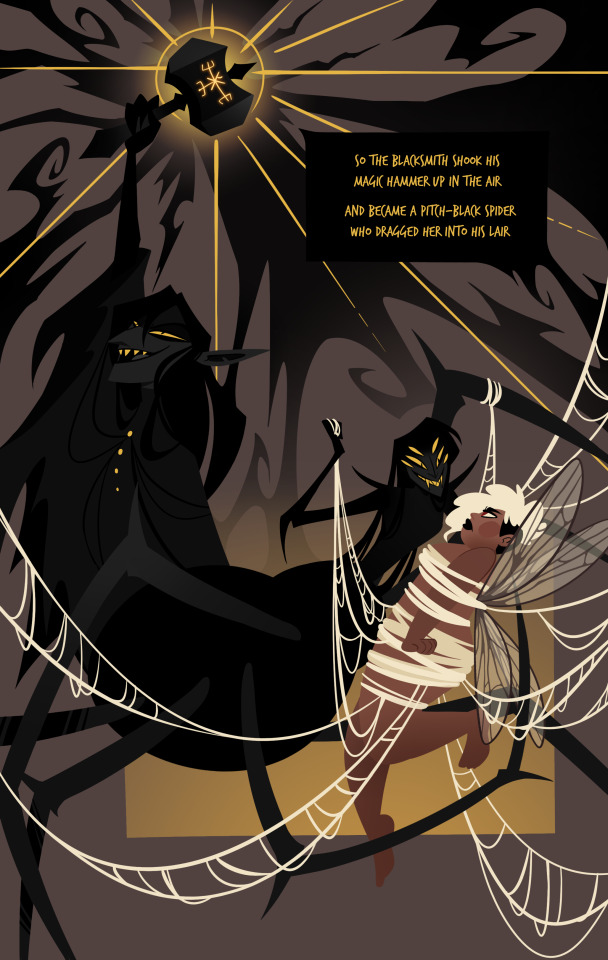
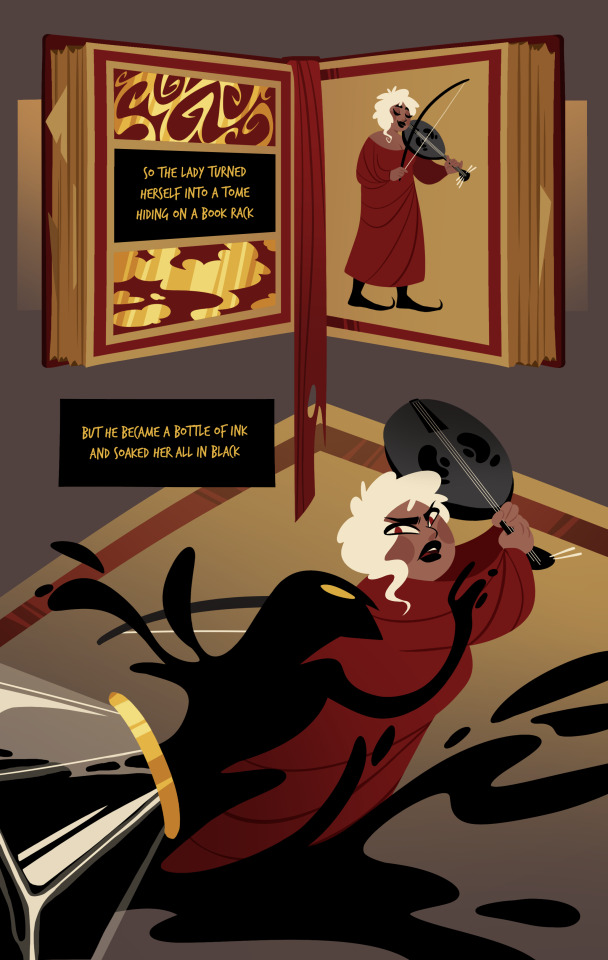



A redo of my old comic "The Two Magicians"
Read on Tapas: HERE
462 notes
·
View notes
Photo






Remember, we don’t say “I love you,” we cut your head off and kick it against the wall.
Another year, another set of shitty Child ballad Valentines. Parts 1 and 1.5 here.
290 notes
·
View notes
Text
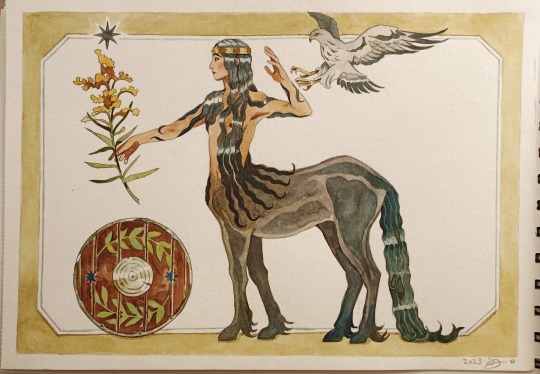
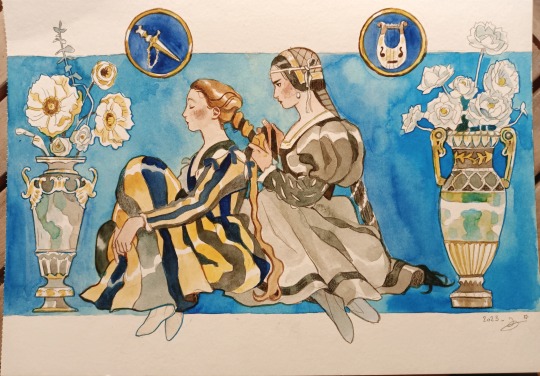
Two little paintings : The Witch of the West-Mer-Lands, and the Twa Sisters
8K notes
·
View notes
